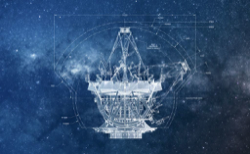
|
Cococubed.com
|
| Catching Element Formation In The Act |
Home
Astronomy research
Software Infrastructure:
MESA
FLASH-X
STARLIB
MESA-Web
starkiller-astro
My instruments
Neutrino Emission:
Neutrinos from de-excitation
Neutrino emission from stars
Identifying the Pre-SN
Neutrino HR diagram
Pre-SN Beta Processes
Pre-SN neutrinos
White dwarf pulsations:
12C(α,γ) & overshooting
Probe of 12C(α,γ)16O
Impact of 22Ne
Impact of ν cooling
Variable white dwarfs
MC reaction rates
Micronovae
Novae
White dwarf supernova:
Stable nickel production
Remnant metallicities
Colliding white dwarfs
Merging white dwarfs
Ignition conditions
Metallicity effects
Central density effects
Detonation density
Tracer particle burning
Subsonic burning fronts
Supersonic fronts
W7 profiles
Massive stars:
Pop III with HST/JWST
Rotating progenitors
3D evolution to collapse
MC reaction rates
Pre-SN variations
Massive star supernova:
Yields of radionuclides
26Al & 60Fe
44Ti, 60Co & 56Ni
SN 1987A light curve
Constraints on Ni/Fe
An r-process
Effects of 12C +12C
Neutron Stars and Black Holes:
Black Hole spectrum
Mass Gap with LVK
Compact object IMF
He burn neutron stars
Stars:
Hypatia catalog
SAGB stars
Nugrid Yields I
He shell convection
BBFH at 40 years
γ-rays within 100 Mpc
Iron Pseudocarbynes
Pre-Solar Grains:
C-rich presolar grains
SiC Type U/C grains
Grains from massive stars
Placing the Sun
SiC Presolar grains
Chemical Evolution:
Radionuclides in 2020s
Zone models H to Zn
Mixing ejecta
Thermodynamics, Opacities & Networks
Radiative Opacity
Skye EOS
Helm EOS
Five EOSs
Equations of State
12C(α,γ)16O Rate
Proton-rich NSE
Reaction networks
Bayesian reaction rates
Verification Problems:
Validating an astro code
Su-Olson
Cog8
Mader
RMTV
Sedov
Noh
Software Instruments
2026 AAS Journals
AAS YouTube
Listing of 500+ Author Videos
AAS Peer Review Workshops
Outreach Material
Education Material
Other Stuff:
Bicycle Adventures
Illustrations
Presentations
Contact: F.X.Timmes
my one page vitae,
full vitae,
research statement, and
teaching statement.
A White Paper for the 2020 Decadal Survey
C.L. Fryer, F.X. Timmes, A, Hungerford, A. Couture, and 256 co-authors
Gamma-ray astronomy explores the most energetic photons in nature to address some of the most pressing puzzles in contemporary astrophysics. It encompasses a wide range of objects and phenomena: stars, supernovae, novae, neutron stars, stellar-mass black holes, nucleosynthesis, the interstellar medium, cosmic rays and relativistic-particle acceleration, and the evolution of galaxies. MeV γ-rays provide a unique probe of nuclear processes in astronomy, directly measuring radioactive decay, nuclear de-excitation, and positron annihilation. The substantial information carried by γ-ray photons allows us to see deeper into these objects, the bulk of the power is often emitted at $gamma;-ray energies, and radioactivity provides a natural physical clock that adds unique information.
New science will be driven by time-domain population studies at γ-ray energies. This science is enabled by next-generation γ-ray instruments with one to two orders of magnitude better sensitivity, larger sky coverage, and faster cadence than all previous γ-ray instruments. This transformative capability permits: (a) the accurate identification of the γ-ray emitting objects and correlations with observations taken at other wavelengths and with other messengers; (b) construction of new γ-ray maps of the Milky Way and other nearby galaxies where extended regions are distinguished from point sources; and (c) considerable serendipitous science of scarce events -- nearby neutron star mergers, for example. Advances in technology push the performance of new γ-ray instruments to address:
- How do white dwarfs explode as Type Ia Supernovae (SNIa)?
- What is the distribution of 56Ni production within a large population of SNIa?
- How do SNIa γ-ray light curves and spectra correlate with their UV/optical/IR counterparts?
- How do massive stars explode as core-collapse supernovae?
- How are newly synthesized elements spread out within the Milky Way Galaxy?
- How do the masses, spins, and radii of compact stellar remnants result from stellar evolution?
- How do novae enrich the Galaxy in heavy elements?
- What is the source that drives the morphology of our Galaxy's positron annihilation γ-rays?
- How do neutron star mergers make most of the stable r-process isotopes?
The unique information provided by MeV γ-ray astronomy to help address these frontiers makes now a compelling time for the astronomy community to strongly advocate for a new γ-ray mission to be operational in the 2020s and beyond.
Check out the full white paper submitted to the 2020 Decadal Survey.

|

|

|

|

|

|